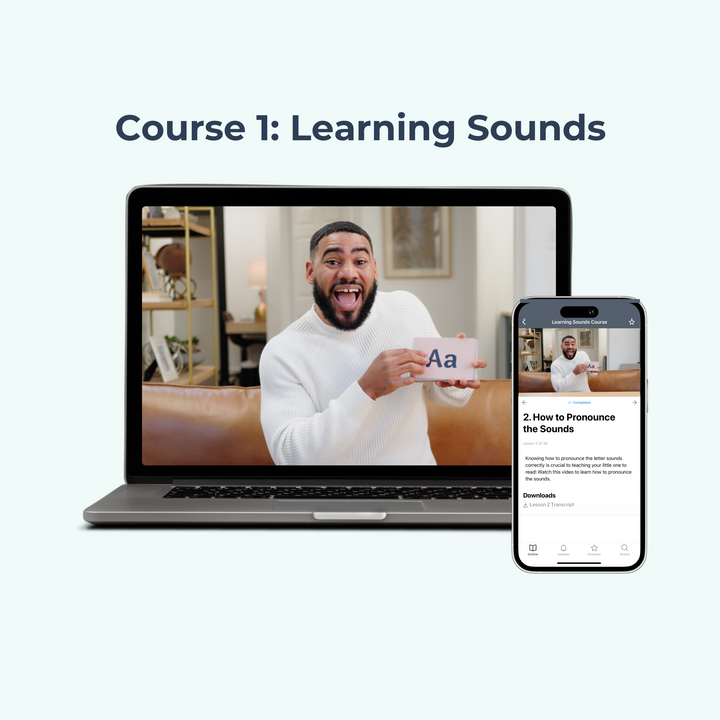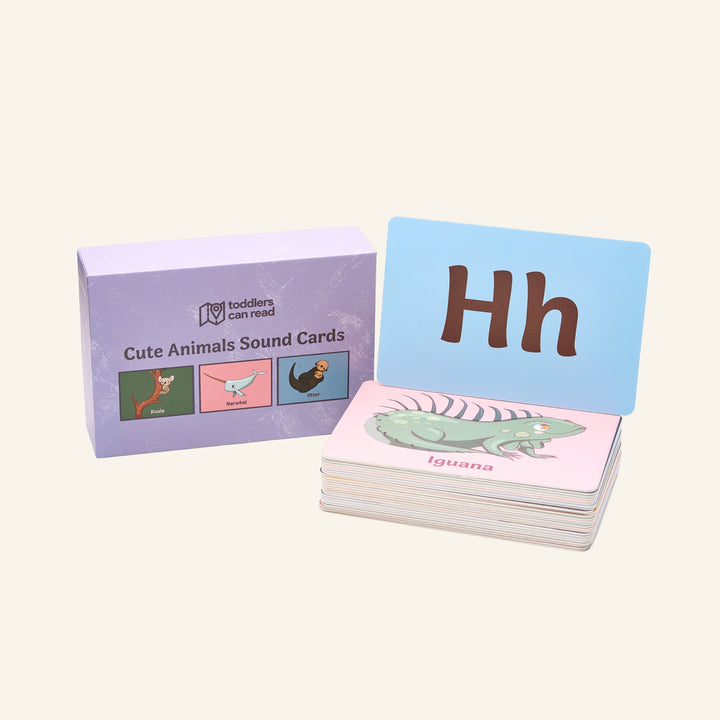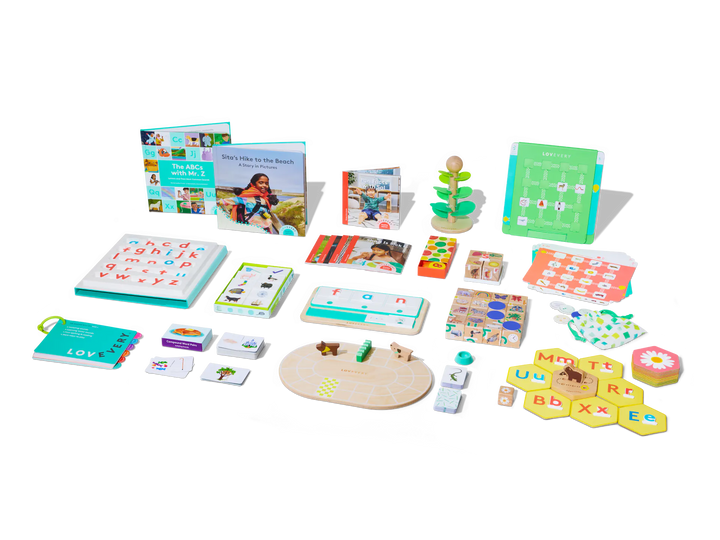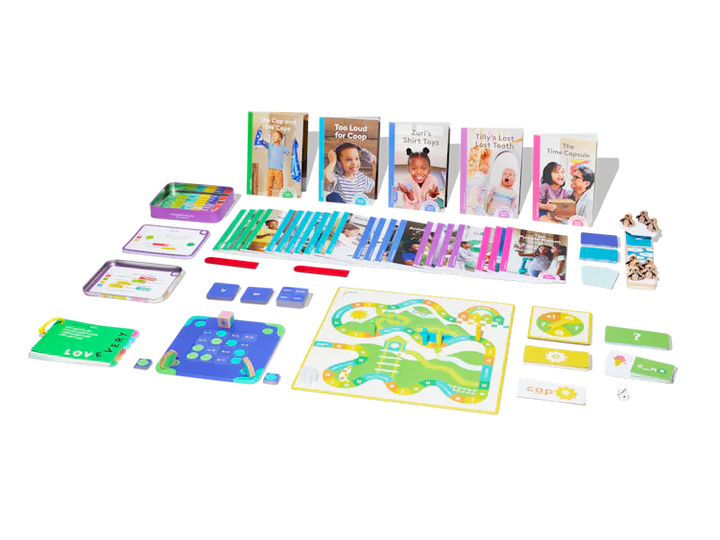Lovevery Reading Skill Set Part 2: Words to Books
Lovevery Reading Skill Set Part 2: Words to Books
Kindergarten and 1st-grade skills
Watch your child discover the joy of reading decodable books all on their own. In Part 2, they’ll learn to read rule-breaker words, blend words with more speed and accuracy, and build comprehension skills.
Only available in the USA & Canada
Couldn't load pickup availability









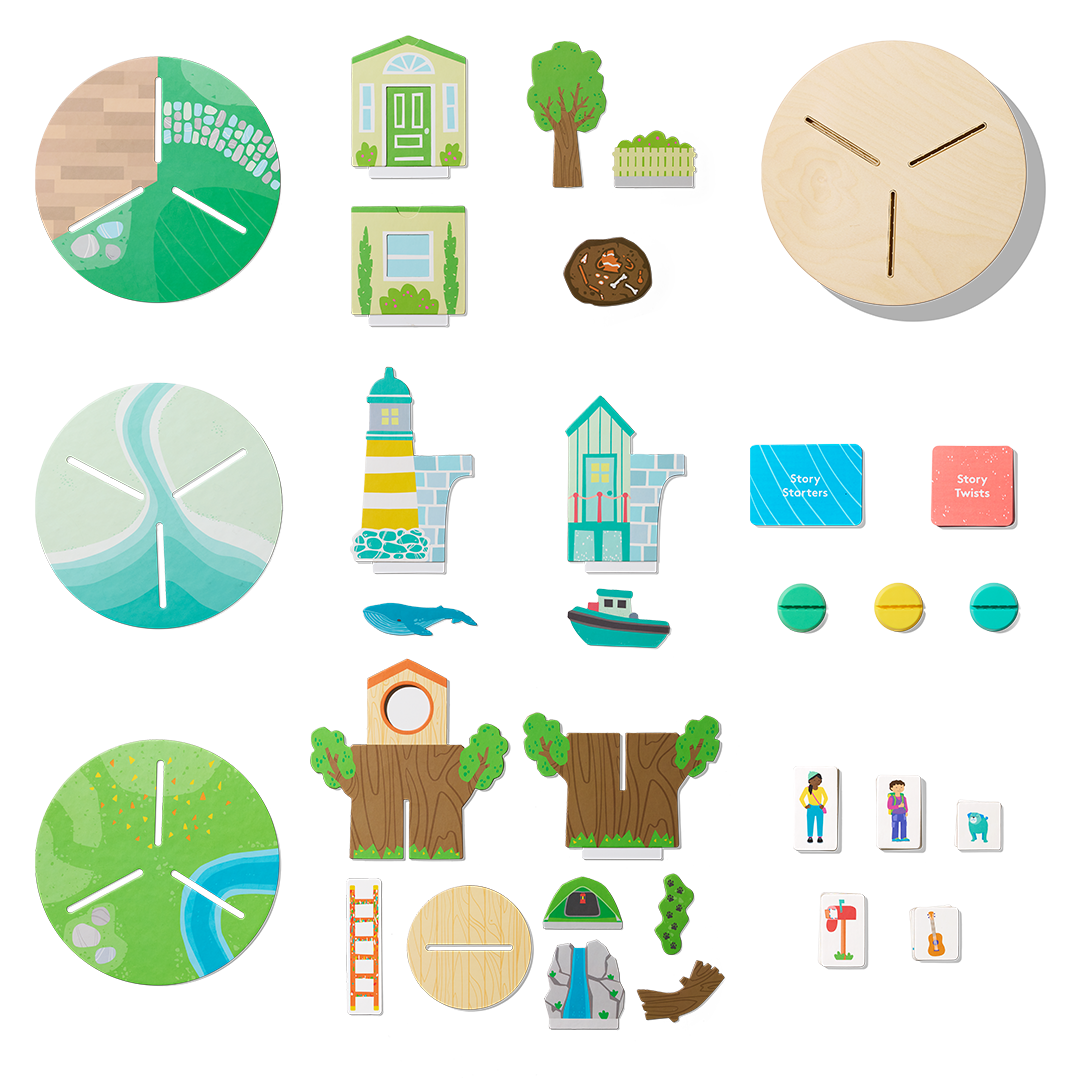
Games and books that keep your child motivated

Mystery Word Decoder
Crack the code to reveal a word then read it by blending the letter sounds. Check your work by making sure the patterns match.
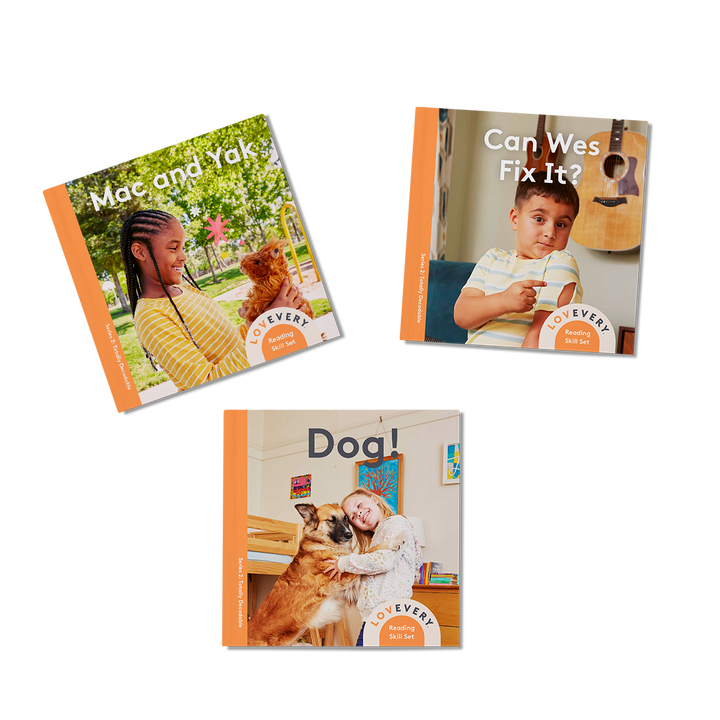
Totally Decodable Book Series
Build confidence with books that only include words with common letter sounds. No rule breaker words like ‘are’, ‘the’ and ‘is’ here.

Wooden Letter Sound Tiles
Use the 65 letter and consonant digraph sound tiles with The Crossword Builder, Sound Swap & Drop game, or on their own to build words.

Sound Swap & Drop
Become flexible and fluent with sounds by swapping tiles to form new words. With just one letter change, ‘sit’ can become ‘fit’ or ‘sat’.

Sticky Word Snack Sticks
Practice reading words that don’t follow regular phonemic rules. This game is full of repetition for easy memorization of sticky words.

Short Vowel Sounds Book Series
Read about fun adventures in this 5-book series that reinforces short vowel sounds, with each book focusing on a specific vowel.

Crossword Builder
Go beyond 3-letter words and practice blending consonants in this modular crossword puzzle.

Consonant Blends Book Series
Reinforce consonant blends with this 5-book series that features interactive elements, like clues for a treasure hunt and a ladybug toy.

Story Order Cards
Learn to tell stories with a beginning, middle, and end by placing pictures in a logical order to tell a unique story.

Set the Scene Storytelling Stage
Build important oral storytelling skills with scenes, props, characters, and prompts to help tell the what, where, who, why, and when.

Play Guide
Learn why each skill matters, how to support your child's reading journey, ideas for practicing skills, and tips to keep play fun.
Inside Part 2: Words to Books
Common Questions
Is The Reading Skill Set a subscription?
The Reading Skill Set is not a subscription-it's broken into 3 parts and designed to move at your child's pace. You can start with the individaul part your child is ready for, or get the complete set at a discount.
Should I wait until my child finishes their Play Kits Subscription before starting The Reading Skill Set?
There’s no need to wait. Lovevery is a complete early learning system, with The Play Kits focused on stage-based, holistic development, and The Reading Skill Set focused specifically on early literacy skills. Your child can have fun and learn with The Reading Skill Set and The Play Kits at the same time.
What age or grade is The Reading Skill Set for?
Each child progresses at their own pace. No matter the grade-level of your child, studies show that re-visiting sound and foundational phonics skills can help increase confidence and fluency. The grade levels listed below are for reference, but you should start with the part that is the best fit for your child’s current skill level.
- Part 1: Skills often taught in Pre-K and Kindergarten
- Part 2: Skills often taught in Kindergarten and 1st grade
- Part 3: Skills often taught in 1st and 2nd grade
Why did Lovevery take a phonics-based approach to reading?
Research shows that incorporating structured phonics is the most effective approach for learning to read, especially for children experiencing difficulty. However, since reading is a complex process, it’s critical that additional skills—such as oral language, fluency, vocabulary, background knowledge, and phonemic awareness—are supported as well.
Learn more about the research:
Ehri, Linnea. “Teaching Phonemic Awareness and Phonics: An Explanation of the National Reading Panel Meta-Analyses.” In The Voice of Evidence in Reading Research, edited by Peggy McCardle and Vinita Chhabra, 153–186. Baltimore, MD: Paul H. Brookes Publishing Co., 2004.
Ehri, Linnea. “The Science of Learning to Read Words: A Case for Systematic Phonics Instruction.” Reading Research Quarterly 55, no. S1 (2020): S45–S60.
National Reading Panel (U.S.) and National Institute of Child Health and Human Development (U.S.). Report of the National Reading Panel: Teaching Children to Read: An Evidence-Based Assessment of the Scientific Research Literature on Reading and its Implications for Reading Instruction. Washington, DC, 2000.
Regional Educational Laboratory Southeast at Florida State University. “What Does 20 Years of Research Say About Teaching Language and Literacy in Preschool?” U.S. Department of Education, Institute of Education Science, 2021.
How much parent involvement is needed to successfully complete this program?
We designed many of the games to be self-correcting (your child can check their own answers) and to be played independently so that you’re not expected to become a reading teacher. As a parent, you’ll need to introduce or set up each product to get them started. Plus, the multiplayer games are fun for families to play together, so they won’t feel like work.
The Play Guide that comes with each part includes helpful scripts to introduce new skills as well as guidance on what to say when your child makes a mistake.
